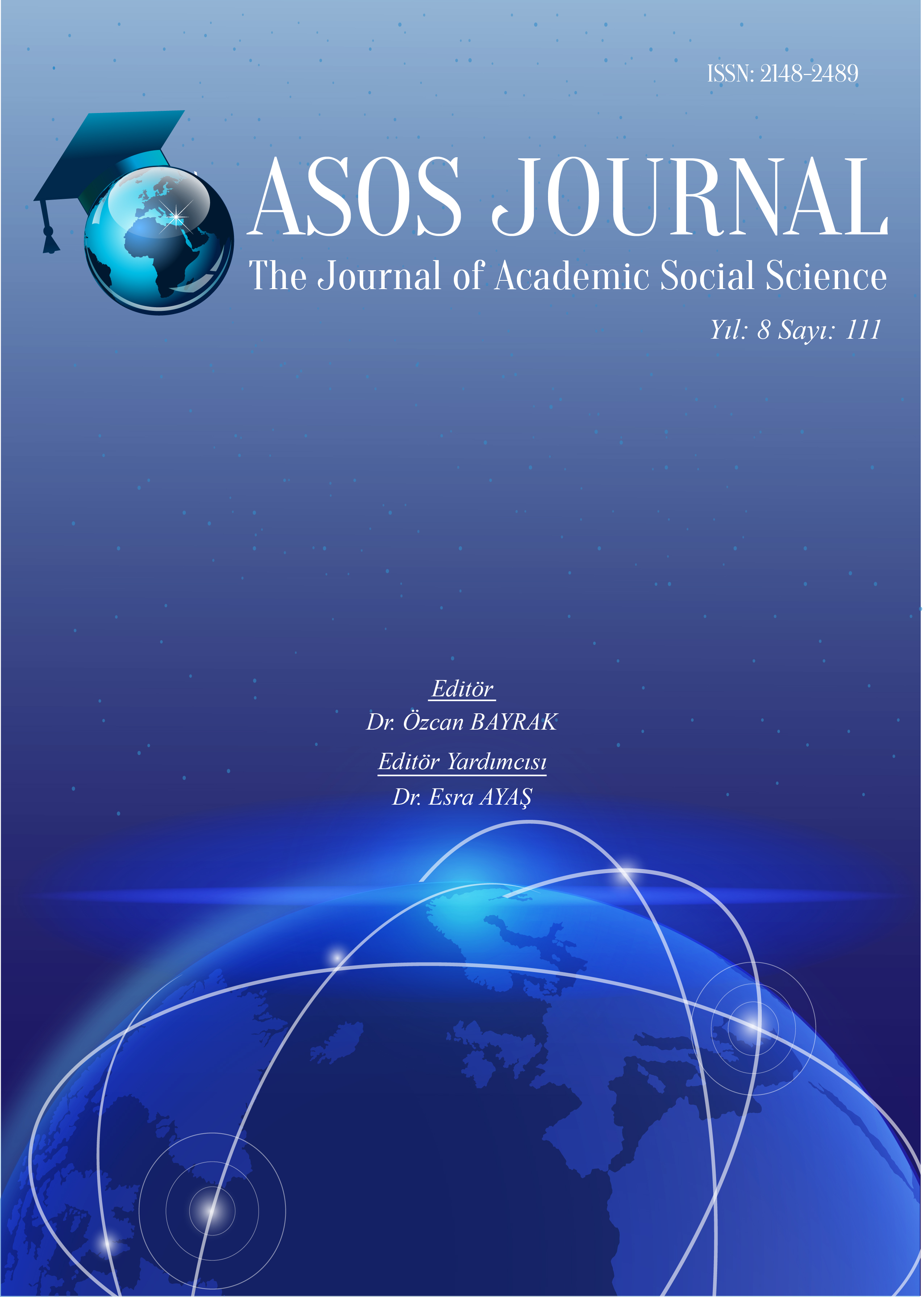Author :
Abstract
16. yüzyılın iki büyük gücü olan İspanya ile Osmanlı Devleti arasında, 1530’lardan sonra, Akdeniz’de muazzam bir çekişme ve rekabet yaşanmaya başlandı. 1492’de “Reconquista”yı tamamlayıp İberya’dan Müslümanları göndermeye başlayan İspanya Batı Akdeniz’de, 15. yüzyılın ikinci yarısından sonra Venedik’ten ve Ceneviz’den birçok bölge alan ve Akdeniz ticaretinde önemli bir oyuncu olarak ortaya çıkan Osmanlı Devleti de Doğu Akdeniz’de büyük birer güç haline geldi. Osmanlı’nın ve İspanya’nın genişlemeye başlayan iktidar alanları, kısa sürede, birbirlerinin çıkarlarını da tehdit etmeye başladı. Bilhassa, İspanya’nın “Reconquista” hareketine Kuzey Afrika kıyılarında devam etmeye başlaması ve Osmanlı’nın Memluk Devleti’ni yenmesi ile Mısır ve Levant bölgelerinin kontrolünü alması bu süreci hızlandırdı. Sahip oldukları devasa kaynaklar ve uçsuz bucaksız topraklar, bu iki devletin Akdeniz’de yapacağı savaşları da etkileyip, İnebahtı’da olduğu gibi, çok geniş katılımlı mücadelelere neden oldu. Doğal olarak, aralarındaki bu mücadeleler ciddi bir rekabete dönüştü ki;1580’lere kadar her iki taraf da deniz gücüne ve donanmaya muazzam kaynaklar ayırdı. Lakin aynı dönem içerisinde, Akdeniz’de bulunan kadırgalarda ve kalelerde meydana gelen değişiklikler ile harcamalar daha da arttı; herhangi bir bölgeyi ele geçirmek daha külfetli bir iş haline geldi. Ama eğer iki devlet de bir cihan hâkimiyeti kurmak istiyorsa, “Cihan İmparatorluğu”na yakışır bir donanma gücüne sahip olmak zorundaydı.
Keywords
Abstract
After the 1530s, a tremendous strife and competition began in the Mediterranean between the two great powers of the 16th century, Spain and the Ottoman Empire. While Spain, which completed the “Reconquista” in 1492 and started to send Muslims from Iberia, became an important power in the Western Mediterranean, after the second half of the 15th century, the Ottoman Empire, which took many regions from Venice and Genoese, became an important power in the Eastern Mediterranean. The spheres of power of the Ottomans and Spain, which had begun to expand, would soon start to threaten each other's interests. Especially, Spain's continuing the "Reconquista" movement along the North African coast and the Ottomans' defeat of the Mamluk State and the control of Egypt and Levant regions accelerated this process. Their enormous resources and endless lands would affect the wars these two states would fight in the Mediterranean and cause struggles with wide participation, as in Lepanto. Naturally, these struggles would turn into serious rivalry, and by the 1580s both sides would devote enormous resources to the navy. In the same period, with the changes in the galleys and castles in the Mediterranean, the expenses would increase even more and it would become more burdensome to capture any region. However, if both states wanted to establish a world domination, they had to have a navy power worthy of the "World Empire".
Keywords
- Bal, F. (2011). XVI. Yüzyılda Osmanlı -İspanya İktisadî İlişkileri: Akdeniz’de Rekabet. ÖNERİ, 9(36).
- Black, J. (2002). European Warfare, 1494-1660. Londra: Routledge.
- Çelebi, K. (2007). Tuhfetü’l-Kibar fi Esfari’l-Bihar. İstanbul: Kabalcı.
- Elliott, J. H. (1961). The Decline of Spain. Past & Present, 20.
- Glete, J. (2000). Warfare at Sea, 1500–1650. Londra: Routledge.
- Greene, M. (2009). The Ottomans in the Mediterrean. V. A. Goffman içinde, The Early Modern Ottomans: Remapping the Empire. Cambridge: Cambridge University Press.
- Guilmartin, F. J. (1974). Gunpowder and Galleys: Changing Technology and Mediterrenean Warfare at Sea in the Sixteenth Century. Londra: Cambridge University Press.
- Gürkan, E. S. (2010). The Centre and The Frontier: Ottoman Cooperation with the North African Corsairs in the Sixteenth Century. Turkish Historical Review, 1.
- Gürkan, E. S. (2011). Osmanlı-Habsburg Rekabeti Çerçevesinde Osmanlılar’ın XVI. Yüzyıl’daki Akdeniz Siyaseti. Osmanlı Dönemi Akdeniz Dünyası. (H. Ç.-Y. Ertaş, Derleyici) İstanbul, İstanbul: Yeditepe.
- Hess, A. (1968). The Moriscos: An Ottoman Fifth Column in The Sixteenth Century. The American Historical Review, 74(1).
- Hess, A. C. (1972). The Battle of Lepanto and Its Place in Mediterranean History. Past & Present(57).
- Kamen, H. (2005). Spain, 1469- 1714: A Society of Conflict. Londra: Pearson: Longman.
- Kossmann, E. (1974). Texts Concerning the Revolt of the Netherlands. Cambridge: Cambridge: Cambridge University Press.
- Kumrular, Ö. (2011). Yeni Belgeler Işığında Osmanlı-Habsburg Düellosu. İstanbul: Kitap Yayınevi.
- Lee, S. (1984). Aspects of European History, 1494-1789. Londra: Routledge.
- Maltby, W. (2002). The reign of Charles V. New York: Palgrave.
- Parker, G. (1970). Spain, Her Enemies and the Revolt of the Netherlands 1559-1648. Past & Present(49), 72-95.
- Parker, G. (2014). Imprudent king: a new biography of Philip II . Londra: Yale University Press.
- Paşa, L. (2001). Tevârih-i ‘Âlî ‘Osmân. (K. Atik, Dü.) Ankara: Kültür Bakanlığı Yayımlar Dairesi Başkanlığı.
- Toledo, M. A. (1995). XIV. – XVI. Yüzyıllarda Türk-İspanyol İliskileri ve Denizcilik Tarihimizle İlgili İspanyol Belgeleri: Las Relaciones Turco-Españolas en los siglos XIV y XVI: Documentos Españoles relativos a la historia naval Otomana. Ankara.
